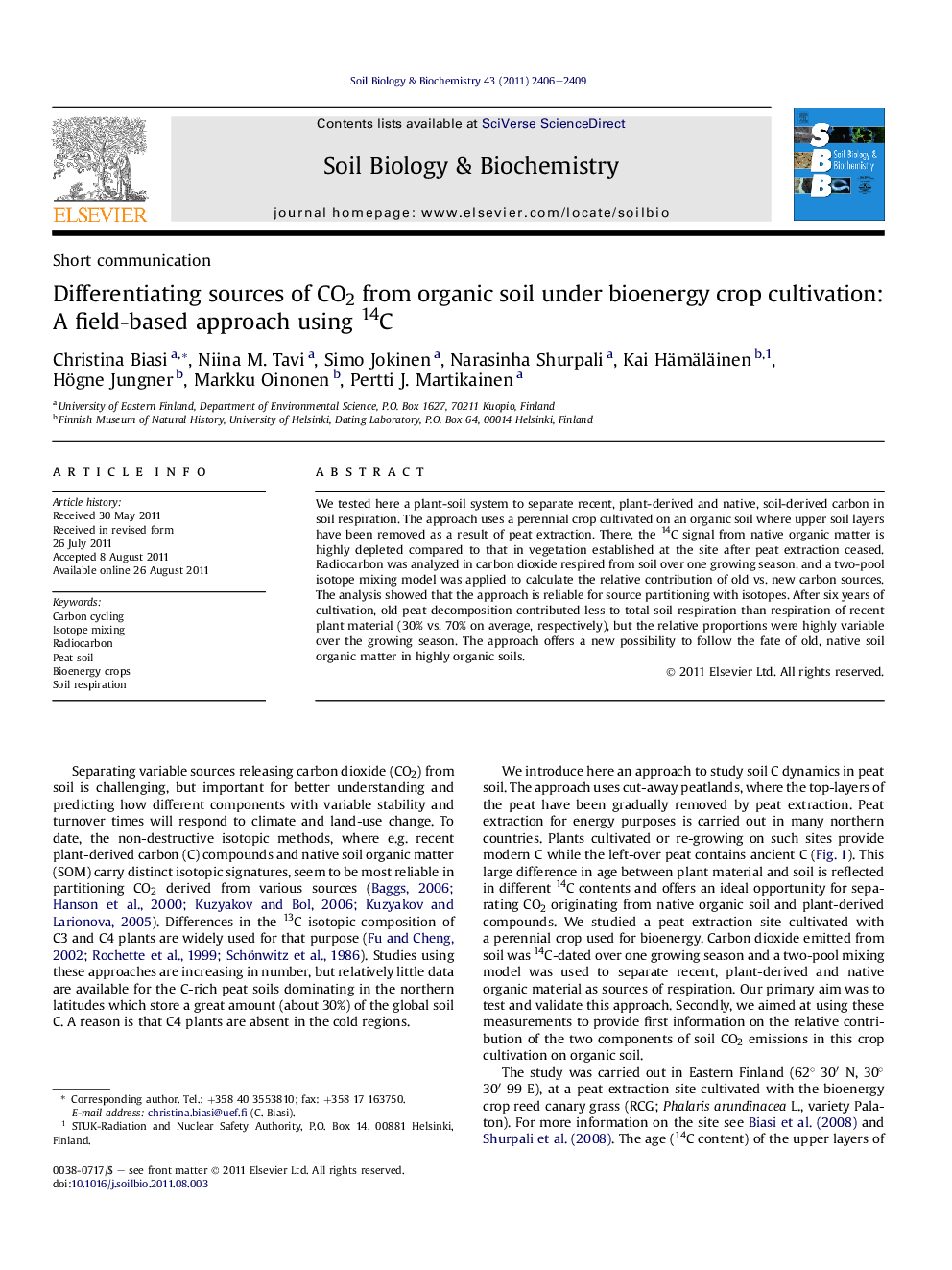| Article ID | Journal | Published Year | Pages | File Type |
|---|---|---|---|---|
| 2025162 | Soil Biology and Biochemistry | 2011 | 4 Pages |
We tested here a plant-soil system to separate recent, plant-derived and native, soil-derived carbon in soil respiration. The approach uses a perennial crop cultivated on an organic soil where upper soil layers have been removed as a result of peat extraction. There, the 14C signal from native organic matter is highly depleted compared to that in vegetation established at the site after peat extraction ceased. Radiocarbon was analyzed in carbon dioxide respired from soil over one growing season, and a two-pool isotope mixing model was applied to calculate the relative contribution of old vs. new carbon sources. The analysis showed that the approach is reliable for source partitioning with isotopes. After six years of cultivation, old peat decomposition contributed less to total soil respiration than respiration of recent plant material (30% vs. 70% on average, respectively), but the relative proportions were highly variable over the growing season. The approach offers a new possibility to follow the fate of old, native soil organic matter in highly organic soils.
► Large differences in age between peat and plants allow reliable partitioning of CO2. ► The fractional contribution of old peat decomposition varies over the growing season. ► The new approach offers ideal possibilities to study the fate of fresh and native SOM.
